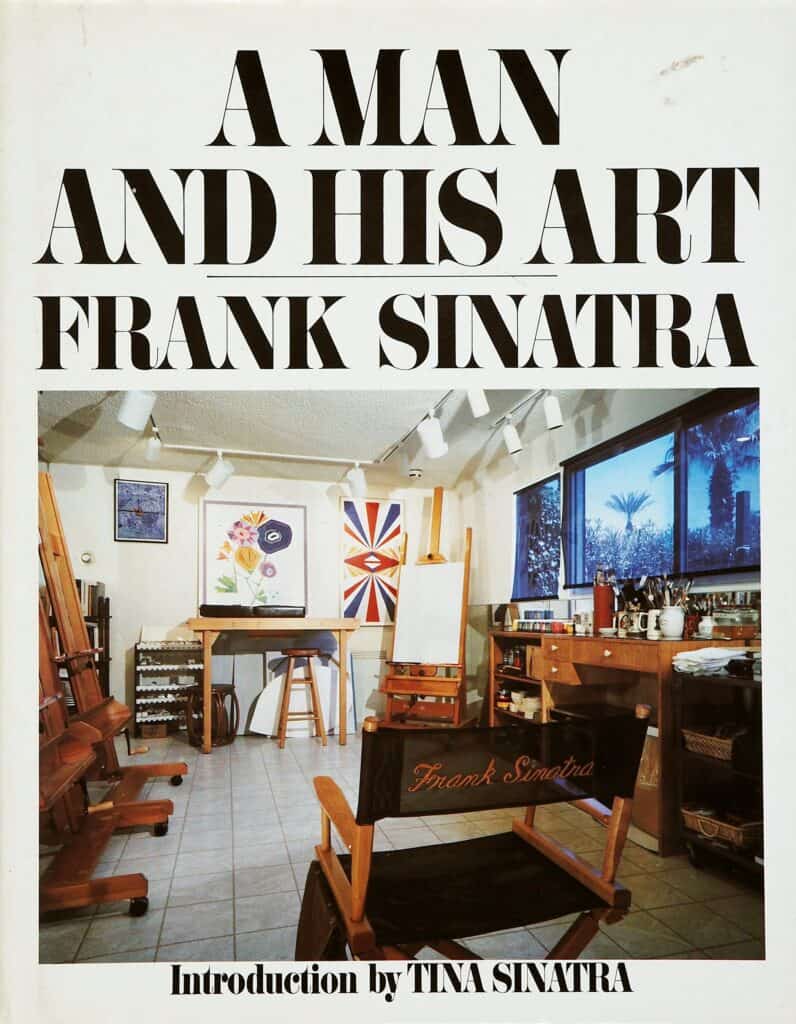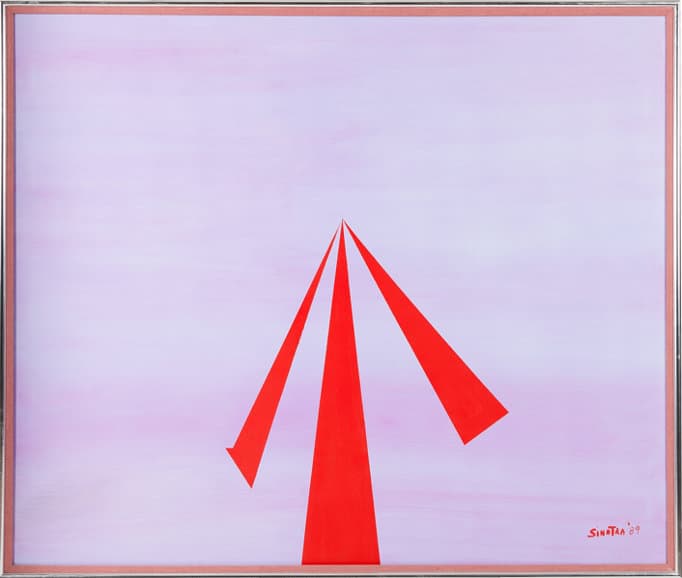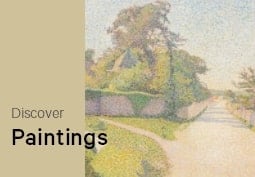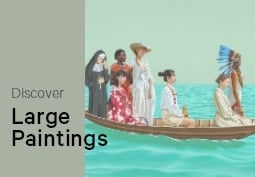The Other Frank Sinatra: Paintings From The Spotlight

By Adam Hencz
This article series explores the lesser-known creative output of artists who became famous for another medium or genre of art. Often, great artists wear many different hats, but break through and achieve acclaim because of their work in one specific medium. To highlight the multifaceted nature of their talent, we seek to uncover the lesser-known side of their artistic production. This week, we reveal the other side of Frank Sinatra, who conveyed a vast emotional spectrum, both musically and cinematically, for a half-century. Meanwhile, Sinatra also enjoyed painting as a relaxing alternative to his original artistic passion and his perfectionism of which sometimes taxed him to his limits.

In 1954, Sinatra’s career was about to reignite with the film, From Here to Eternity – for which he won an Oscar in 1954, but also the launch of his first successful album for Capitol Records, Songs for Young Lovers. Around the same time, Sinatra purchased a couple of lots including a modest home at the foot of the San Jacinto Mountains, in Palm Springs, on Wonder Palms Road (now Frank Sinatra Drive). Palm Springs was one of the most enduring passions of Sinatra’s life. Having a quieter place to escape to was vital for him as his career rebounded. Sinatra gradually expanded his property in the desert and in the mid-1960s he added a light-filled studio to his home, with windows gazing out at the tops of palm trees.
Beyond his renowned musical gifts, Sinatra also had some talent for painting and was a keen collector of art; he especially liked the Impressionists and the Cubists and emulated their styles. He loved Miró and Picasso, Matisse, Leroy Neiman and David Hockney. Marc Chagall, Walt Kuhn and Childe Hassam were also among the many artists represented in a diverse group of works in the Sinatra collection.
Sinatra’s approach to painting was one of pure pleasure. He was less concerned with making an artistic statement or pushing boundaries, and more with putting paint to canvas for the mere delight of it. He created works from the ‘50s, but explored visual art mainly in the later part of his life and most of his works were realised in the ‘80s and ‘90s at Rancho Mirage, the Sinatras’ estate in Palm Springs.
During his later years, after retiring from films, he enjoyed having ample time to indulge his love of painting, which he found both physically relaxing and artistically invigorating. Unlike performing, which was publicly exhilarating, painting became his favorite way to restore his energy. His works were never offered for sale, but rather hung on the walls of their home or were given to dear friends like the Reagans. As Sinatra painted for himself, there is a charming lack of finish to many of his works. Lines are rarely perfectly straight, colours bleed into one another, shapes are slightly misshapen.
Inspired by Walter Kuhn, Sinatra created a great number of clown paintings throughout the deacades, exploring this recurring motif in several versions and styles. Of his many images of clowns, Sinatra’s wife Barbara recalled in a talk with Sotheby’s, “He called them self-portraits because I think he identified with the mask they wear—but his clowns were never sad or evil looking”. While his paintings do vary dramatically in style, many of them tend towards the abstract. Barbara observed him at work and once said of his process, “He was, of course, Charlie Neat (as he was dubbed after his obsession with cleanliness – Ed.) when it came to painting; there was rarely any mess. He only ever had one ‘Jackson Pollock moment’ that I knew of. I walked into his studio one day and found him reaching into pots of paint with his fingers and hurling it at the canvas. I don’t think he even knew I was there. Watching him lost in a world of his own creativity, I knew that art was another kind of therapy for him.”

While he was influenced by several abstract artists, Sinatra’s abstract attempts combine his fascination with geometric shapes and his interest in the less severe forms found in nature. In her introduction to the 1991 book A Man and His Art: Frank Sinatra, his daughter Tina writes: “For the past ten years or so my father has painted in a geometric abstract style, which has been very satisfying for him. He is a fastidious person, a detail man, so he relishes the precision required to paint severe forms”. Sinatra spent more than 40 years copying the style of the greatest abstract artists of the 20th century, creating works reminiscent of Frank Stella’s rectangular shapes, or a grid painting in primary colors that could be mistaken for a Mondrian at first glance.
Over the years, together with Barbara, the Sinatras added pieces by Matisse and Picasso to their collection and amassed quantities of jewellery and decorative objects from Frank’s long and glittering career. Along with Sinatra’s paintings these treasures were sold under the hammer a year after Barbara’s death in 2018, at Sotheby’s New York, in the Lady Blue Eyes: Property of Barbara and Frank Sinatra sale.
Relevant sources to learn more
Frank Sinatra’s Original Palm Springs Estate
Read more articles in our article series about the lesser-known creative output of some of the world’s most beloved artists:
The Other John Waters
The Other Alejandro Jodorowsky
The Other David Lynch
The Other Patti Smith







